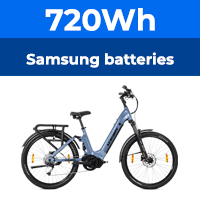Hi all
Apologies, this should probably be in the "Technical" section, but my account will not let me create new threads in this area for some reason. I have emailed the mods, but I have not received a response yet.
My Torq started to judder and I traced the fault to a broken power wire. This was near to the top of the front forks and due to the wire being twisted backwards and forwards when steering.
I have joined the cable together and checked the other power leads and the thin sense leads, these all look OK visually.
However when I turn the throttle the wheel attempts to move and then I receive an 8 LED flash error. Which according the Flecc's site is "Hall sensor in motor faulty"
If my memory serves me correctly, I did read on this forum, that this can sometimes be caused by a faulty throttle and the connections on my throttle are a little corroded. So I was wondering, it is possible to short out a couple of the pins on this connector, to simulate the throttle being at full power (Assuming it is a potentiometer).
Other than that any ideas will greatly appreciated.
Ian
Apologies, this should probably be in the "Technical" section, but my account will not let me create new threads in this area for some reason. I have emailed the mods, but I have not received a response yet.
My Torq started to judder and I traced the fault to a broken power wire. This was near to the top of the front forks and due to the wire being twisted backwards and forwards when steering.
I have joined the cable together and checked the other power leads and the thin sense leads, these all look OK visually.
However when I turn the throttle the wheel attempts to move and then I receive an 8 LED flash error. Which according the Flecc's site is "Hall sensor in motor faulty"
If my memory serves me correctly, I did read on this forum, that this can sometimes be caused by a faulty throttle and the connections on my throttle are a little corroded. So I was wondering, it is possible to short out a couple of the pins on this connector, to simulate the throttle being at full power (Assuming it is a potentiometer).
Other than that any ideas will greatly appreciated.
Ian







